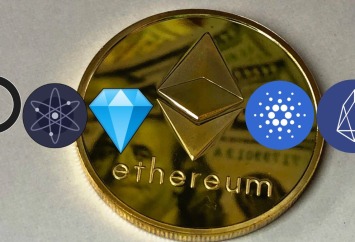
The Ethereum 2.0 launch process started in November 2020. The network’s shift to a proof-of-stake validation protocol, in which miners will be replaced by “stakers”, should make ETH a deflationary asset. .
Vitalik Buterin, the co-founder of Ethereum, presented a “credible roadmap” for Ethereum 2.0. He proposed a future in which the first “smart contracts” platform could greatly improve its “scalability”, while continuing to be “trustless” (with participants who do not need to trust each other) and resistant to censorship.
In an article published Monday and dubbed “endgame” (outcome), the young computer scientist tried to show how a large blockchain – defined by a high block creation frequency, a large block size and several thousand transactions per second – could still be considered sufficiently “trustless” and resistant to censorship. The compromise to be accepted in order to reach this level of “scalability” would lie in the centralization of the production of blocks.
Here are the solutions suggested by the programmer:
- “ A second level of“ staking ”, with low resource requirements” to perform block validation;
- “ The introduction of an anti-fraud mechanism or ZK-SNARKS (Zero Disclosure Proof) to allow users to check the validity of blocks directly and at low cost”;
- and “the introduction of a data availability sampling system to allow users to check the availability of a block and add secondary transaction channels to prevent censorship”.
These updates will achieve “a chain in which block production will remain centralized, but their validation will be ‘trustless’ and highly decentralized, with specialized anti-censorship ‘magic’ that will prevent block producers from censoring [ other participants] ”.
Vitalik Buterin has indicated that block production will remain centralized, despite the establishment of “rollups” – “second layer” solutions deployed around the Ethereum blockchain.
“ No single ‘rollup’ should be able to manage a level of activity close to the majority on Ethereum. Instead, they should all be able to process a few hundred transactions per second at most, ”he added.
For the Ethereum co-founder, there is a significant likelihood that block production will remain centralized, regardless of which path to “scalability” the network takes.
Enthusiasm has grown around Ethereum since the start of its long transition to a proof-of-stake validation protocol, which began in November 2020. Last August, the blockchain set up the “hard fork” London, which included including update EIP-1559 . This consists in destroying part of the transaction fees paid to minors, favoring a contraction of the ETH supply.

When writing this article, more than 1.13 million e-thers had so “burned”, the equivalent of nearly 5 billion at current prices.




